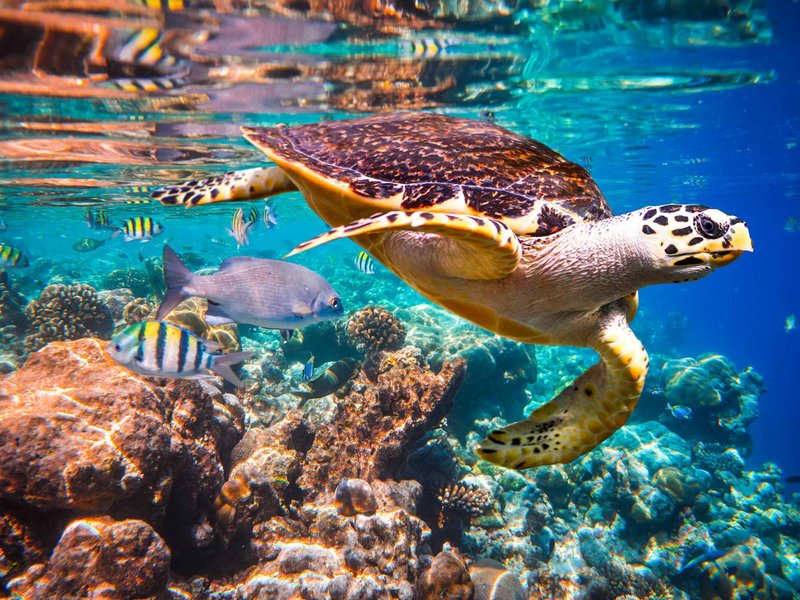Ecosystem and Biodiversity

The great diversity of living beings can be measured by the number of species. About 2 million have been described in the biosphere, but it is estimated that the number of species currently in existence may be as high as 12.5 million.
Biodiversity
Biodiversity is the variability of living organisms of any kind, including in any type of ecosystem. It includes diversity within species, between species and between ecosystems. But it does not refer to the number of individuals of each of these species.
That there are more species in one ecosystem than in another, i.e. that there is more biodiversity, is largely due to environmental conditions, the availability of light, temperature, humidity, salinity, etc. Thus, we know that the richest spaces in terms of species of living beings are the tropical forests, while the poorest are the deserts, the hot ones like the Sahara and the cold ones like Antarctica. In general, we can say that the harsher the environmental conditions in an ecosystem, the less biodiversity there is.
The endemisms
Endemisms are those species that only exist in a specific part of the world. They have great ecological value because they are unique species, that is, unique living genetic combinations, formed by a particular evolutionary process in conditions of isolation.
Some definitions:
Species. It is a group of living beings that have common characteristics and that through reproduction generate fertile offspring.
Threatened species. It is the species that for various reasons, such as the alteration of its habitat, has been reduced in the number of individuals and is in a critical situation of survival.

Ecological species. Set of populations among which there is or may be genetic exchange.
Pinhole species.. A species that needs very specific environmental conditions for its development, without which it cannot live. Although this does not mean that its geographical area is small.
Loss of biodiversity
Environmental changes caused by human activity lead to an accelerated impoverishment of biodiversity. According to the Convention on Biological Diversity adopted in Rio de Janeiro in 1992, biodiversity consists of “the variability among living organisms from all sources including terrestrial, marine and other aquatic ecosystems and the ecological complexes of which they are part; it includes diversity within species, between species and of ecosystems”.
Biodiversity provides food security and a gene pool for biotechnology, especially in agriculture and medicine, and supports the development of ecotourism. So far, taxonomists have inventoried about 1.7 million living organisms (plants, animals and micro-organisms); however, it is estimated that there could be between 8 and 15 million.
Biologists now admit that we are witnessing the first stages of the seventh mass extinction caused by human intervention. The current rate of extinction is estimated to be between one hundred and one thousand times faster than at the time of man’s appearance. According to scientific estimates, an estimated 27,000 species disappear every year, that is, 74 species disappear or become threatened every day, or, in other words, three species per hour.
The disappearance of species is due not only to the accelerated rate of extinction but also to the slower rate of emergence of new species as human activities reduce the natural environment.
The main causes of biodiversity loss are:- the destruction of natural habitats to extend urban and agricultural areas and to obtain timber, minerals and other natural resources; – the invasion of alien species that are deliberately or accidentally introduced into a habitat.
As these species advance, local fauna and flora are reduced or become extinct; – pollution from industrial and agricultural products that destroy fauna and flora, especially freshwater; – global warming, which is seen as a biodiversity-destroying agent that will become important in the future.
Biodiversity Conservation
Towards the end of the 20th century, the community of nations began to become aware of the risks of environmental degradation and biodiversity loss. As a result, during the United Nations Conference on Environment and Development held in 1992 in Rio de Janeiro, the Convention on Biological Diversity was signed. This Convention is the first global agreement to address all aspects of biological diversity: genetic resources, species and ecosystems.
It recognizes that the conservation of biological diversity is “a common concern of humankind” and an integral part of the development process. Its objectives are “the conservation of biological diversity, the sustainable use of its components and the fair and equitable sharing of the benefits arising out of the utilization of genetic resources”.
Some of the measures contemplated by the Convention are
- establish a system of protected areas where special measures are taken to conserve biological diversity (in situ conservation);
- maintain facilities for ex situ conservation and research on plants, animals and micro-organisms;
- adopt measures for the recovery and rehabilitation of species threatened with extinction and for their reintroduction into their natural habitats under appropriate conditions;
- establish programmes for scientific and technical education and training in measures for the identification, conservation and sustainable use of biological diversity; promote international scientific and technical cooperation
